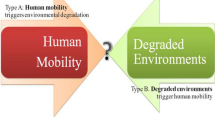Abstract
Man’s attempts to intensify the use of natural resources can often result in the exhaustion of the resource or deterioration of other interacting resources. The single-minded pursuit of the development of the water resources of the rivers of the Western Ghats shows many examples of this view, particularly in the unnecessary destruction of the dwindling forest resources. This destruction may be caused by (i) problems o f rehabilitation, e.g. the Ramanagar settlement of the Kalinadi project (ii) the impact of labourers, e.g. the destruction of evergreen sholas on the Upper Nilgiri plateau (iii) the access to encroachers and poachers, e.g. Panshet and Kalinadi (iv) faulty planning, e.g. Linganamakki and Kalinadi. This destruction of forest cover has had a number of deleterious consequences in (i) worsening the shortages of forest resources, (ii) hastening the siltation of the reservoirs, (iii) ecological imbalances as in the rapid spread ofEupatorium in the Kalinadi project area and (iv) the decimation of biological diversity, as in the great reduction of evergreen forests in the Western Ghats, threatening the survival of lion-tailed macaque and the extinction of grass species,Hubbardia heptaneuron. It is stressed that the only sustainable and therefore true development is environmentally sound development. The interests of the weaker sections of the society often provide a good index of the soundness of the development from an environmental point of view. The planning of the development process with this perspective is a great scientific and technological challenge that must be taken up.
Similar content being viewed by others
References
Anon 1977a Report of the task force for the ecological planning of the development of Western Ghats, National Committee on Environmental Planning and Co-ordination, Bangalore, pp. 20
Anon 1977b Perspective plan for forests of Karnataka (Bangalore), Report of Karnataka Forest Department
Anon 1978 Joint Commissioner (Sc-F): statement showing rate of siltation etc. under the centrally sponsored scheme of soil conservation, Ministry of Agriculture and Irrigation, Government of India
Bahuguna S L 1978Voluntary Action 20 18
Blasco F 1971Inst. Fr. Pondichery Tr. Sect. Sci. Tech. 11 436
Bryson R A & Barreis D A 1967Bull. Am. Meterol. Soc. 48 136
Darwin C E 1976Seminar on hydropower and environment, Georgetown, pamphlet
Dasmann R F, Milson J P & Freeman P H (eds.) 1973Ecological principles for economic development (London: John Wiley) pp. 252
Farvar M T & Milton J P (eds.) 1973The careless technology: ecology and international development (New York: Natural History Press) pp. 1030
Gadgil M & Prasad S N 1978Commerce 136 1000
Gadgil M & Vartak V D 1976Econ. Bot. 30 152
John Joseph 1978 Personal communication
Kannan K P 1979Socio-economic and ecological consequences of water control projects: the case of Kuttanad in Kerala (India) (Trivandrum: Centre for Development studies) pp. 39
Mishra A & Tripathi S 1978Chipko movement (New Delhi: Gandhi Book House) p. 37
Nair N C 1979 Personal communication
Pareira H C 1973Land use and water resources in temperate and tropical climates (London: Cambridge University Press) pp. 246
Pascal and Maher-Homji 1978 Personal communication
Prasad M K, Paramcswaran M P Damodaran V K, Nair K N S & Kannan K P 1979The Silent Valley Hydroelectric Project: a techmo-economic and socia-political assesment (Trivandrum: Kerala Sastra Sahitya Parishad) pp. 61
Prasad S N & Gadgil M 1977Conservation of bamboo resources of Karnataka: a preliminary report (Bangalore: Karnataka State Council for Science and Technology) pp. 50
Rao K L 1975India’s water wealth: its assessment, uses and projections (New Delhi: Orient Longman) pp. 255
Saldanha Rev Fr C J 1979 Personal communication
Sastri P, Gadgil M & Malhotra K C 1977A proposal for the compatible development of animal husbandry and forestry interests of North Kanara (Bangalore: Karnataka State Council for Science and Technology) pp. 60
Sharma Y M L 1978 Personal communication
Thomas WL (ed.) 1956Man’s role in changing the face of the earth; (Chicago: University Press) vols 1 and 2
Verghese B G 1977Gift of the greater Ganga, Coromandel Lecture 8 (New Delhi: Coromandel Fertilisers Ltd.) p. 53
Author information
Authors and Affiliations
Rights and permissions
About this article
Cite this article
Gadgil, M. Hills, dams and forests. Some field observations from the Western Ghats. Proc. Indian Acad. Sci. 2, 291–301 (1979). https://doi.org/10.1007/BF02848927
Received:
Issue Date:
DOI: https://doi.org/10.1007/BF02848927




